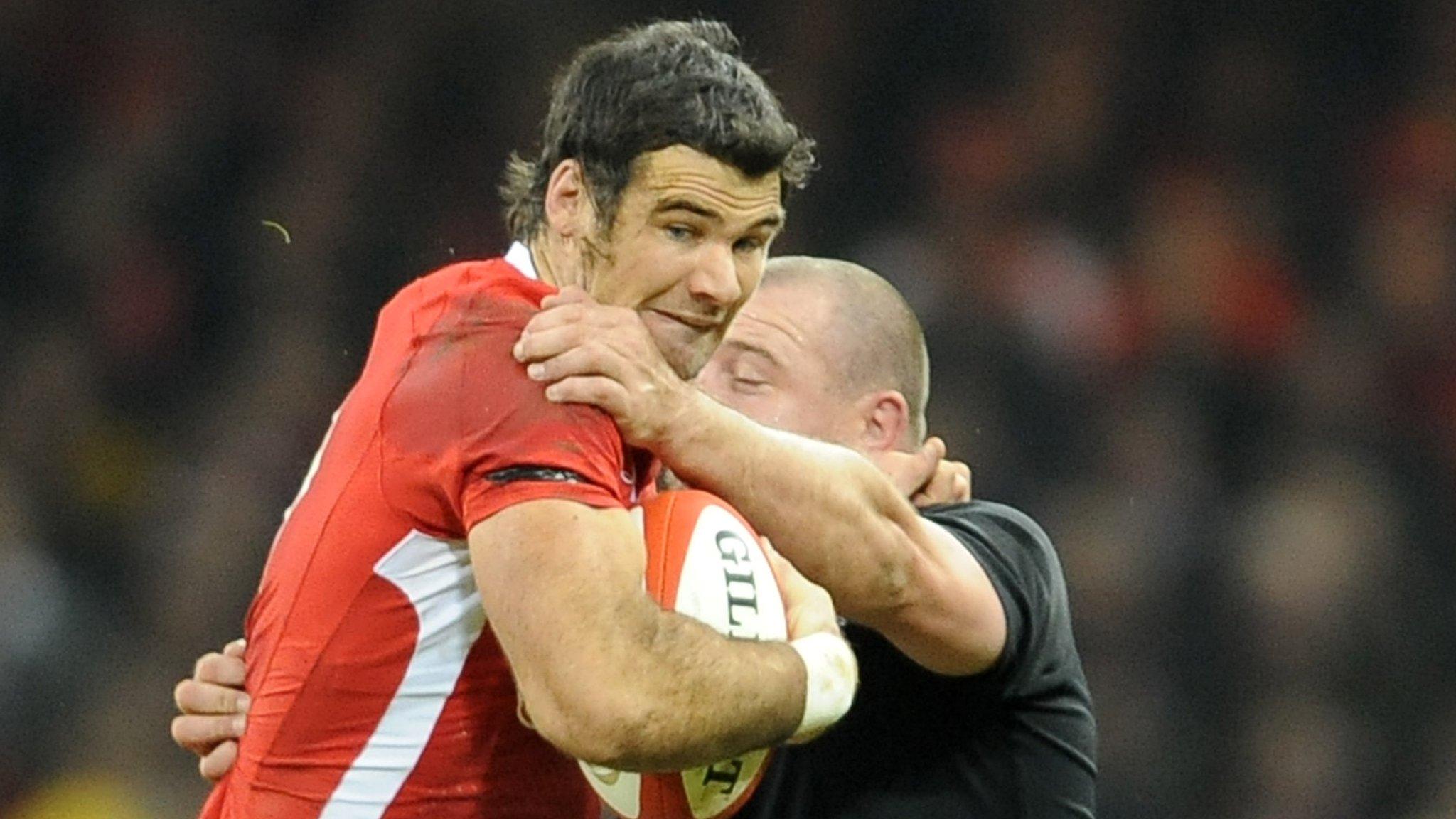Wales v New Zealand: 1905 win illustrated in children's book
- Published

Wales and New Zealand's All Blacks face each other nearly 120 years after their first meeting in 1905 on Saturday
When Wales run out at the Principality Stadium on Saturday evening against New Zealand, they will be looking for just their fourth victory in 116 years.
Yet they can be inspired by the tale of the sides' first meeting in 1905, when the mighty All Blacks were defeated 3-0 at the old Cardiff Arms Park.
The story of captain Gwyn Nicholls' famous Welsh victory has now been recounted in a children's book by rugby author James Stafford.
He said it aimed not only to tell children about the match, but also teach them about the social history of the Edwardian era.
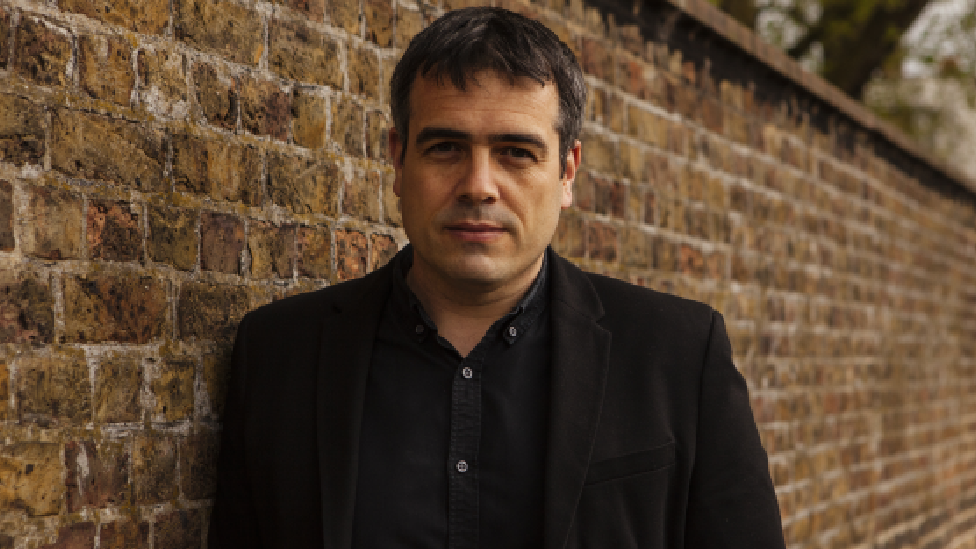
James has written for publications including the Daily Telegraph, Rugby World and ESPN
How Wales Beat the Mighty All Blacks touches on points such as the change in kit style, the progression of the Welsh flag over the years and the first singing of a national anthem at an international sporting event and was illustrated by James' niece, Carys Feehan.
In 2018 she won CalArt University's award the Lillian Disney Scholarship - founded in memory of Walt's wife, who was a highly-respected illustrator.
James said it was Carys's illustrations which helped tell the story every bit as much as his words.
"I can try and set the atmosphere of the age, but it's really Carys's drawings which bring it to life for children today.
"From the heavy woollen jerseys they wore, to their tough, heavy and often-improvised boots, the pictures tell their own stories of the struggle and pride of a nation at the back end of the Industrial Revolution."

Carys Feehan is behind the illustrations for the 48-page book
Carys said: "When James was explaining the fantastical tale-like style he was approaching the story with, I was instantly reminded of illustrations such as Cicely Mary Barker's Flower Fairies and other mystical, delicate watercolour works from around the time.
"I drew upon that massively when I was planning how I would render the final art pieces, in terms of the colour schemes, the backgrounds and the lighting."
The fully-illustrated book follows the struggles of class, amateurism versus professionalism and Edwardian society and culture through the eyes of retired Welsh legend Gwyn Nicholls, who was tempted back to the game to defend the honour of Wales.
Then running a laundry firm, the "Prince of Centres" several times refused to be included in Wales' team, as unbeaten New Zealand amassed a 801 to 22 points difference on their 27-game unbeaten tour of Britain - seeing off England, Scotland and Ireland along the way.
At last he agreed to play and was made captain.
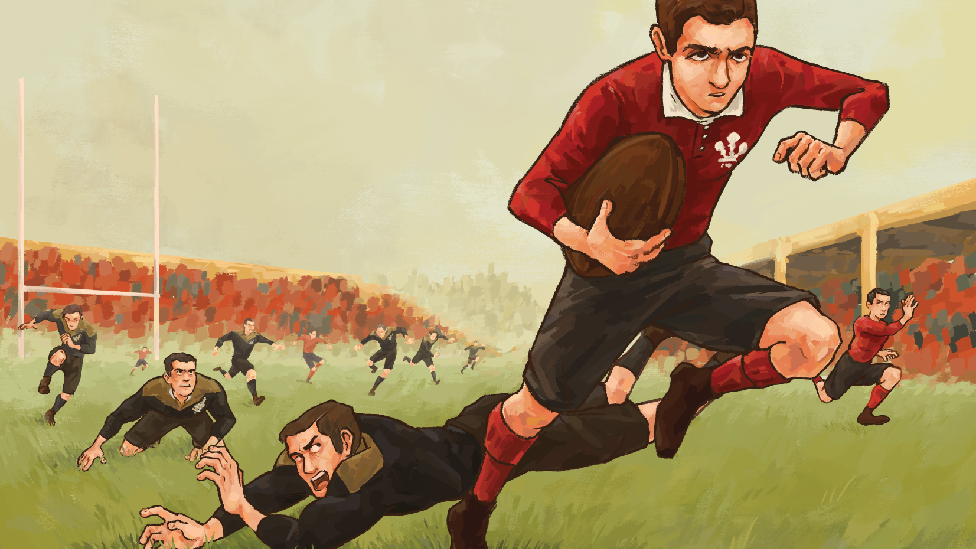
Morgan scored Wales' famous first try before half-time against the Kiwis
"Many of the themes may seem like rugby stereotypes to adult readers, but they are stereotypes for a reason - they're true," he said.
"Rugby was very different for Wales as opposed to the other home nations, as here it was a sport that cut through the class system more than it tended to do in England, Ireland and Scotland."
James explained the concept of the "Rhondda forward", a particular type of Welsh player hardened by their day-jobs in the coal mines and iron works.
He added that Scottish officials were known to openly protest at the inclusion of these "working class" players, seeing their heavy labour as a form of unfair advantage.
This made Wales and New Zealand kindred spirits, as many of their side had also been "toughened up" by less wealthy farming backgrounds.
As the game came around on 16 December 1905, few gave the Welsh any chance, yet 50,000 still crammed into Cardiff Arms Park, while thousands more gathered outside on scaffolding and horse carts.
The all-conquering All Blacks performed the Haka and in response eventual match-winner, winger Teddy Morgan cleared his throat and began to sing Hen Wlad fy Nhadau.
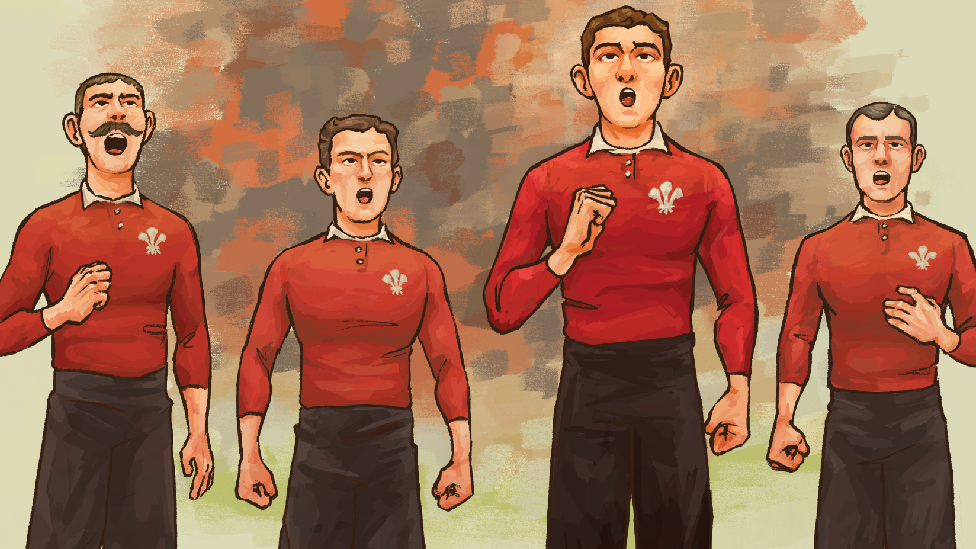
The Welsh team sang the national anthem for the first time in front of 47,000 spectators
"Teddy led what was seen as a natural and fitting response to the haka", explained James.
"But it was the first time a national anthem had ever been sung at an international sporting event. Even though it's something which is ubiquitous today, back then All Blacks captain Dave Gallaher said it made the hair on the back of his neck stand up.
"In Carys' artwork you can see, not only how formally dressed the crowd were, but also how the Welsh flag is subtly different to today, with a much thinner green segment at the bottom."
The game was settled by a single try - which were worth three points back then - from Morgan, following a scrum on the All Blacks' 22.
Though Bob Deans for New Zealand claimed until his death that he had equalised, and that last tackler back for Wales, Rhys Gabe had failed to hold him up over the line.
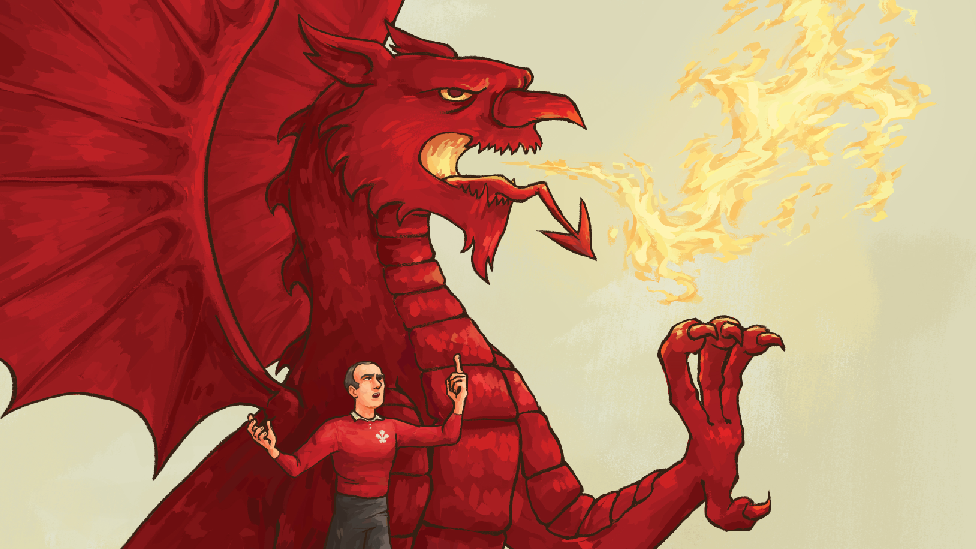
The Welsh victory deprived the All Blacks of New Zealand of a clean sweep on their 1905 tour
James concluded: "The events of the tour shaped the popular culture of both nations, helping to put rugby at the core of our shared identity.
"While the challenge from Wales in this fixture generally hasn't been up to the level that it once was, the reality is all New Zealand rugby fans know all about this game and cherish the history of the two teams.
"In fact, since I announced the book on social media, I've had plenty of comments from New Zealanders claiming that Bob Deans did in fact score and the ref was useless.
"You would think that with New Zealand leading 32 wins to three in the series they would be over it by now. But it goes to show what a true epic that game was!"
- Published29 April 2018
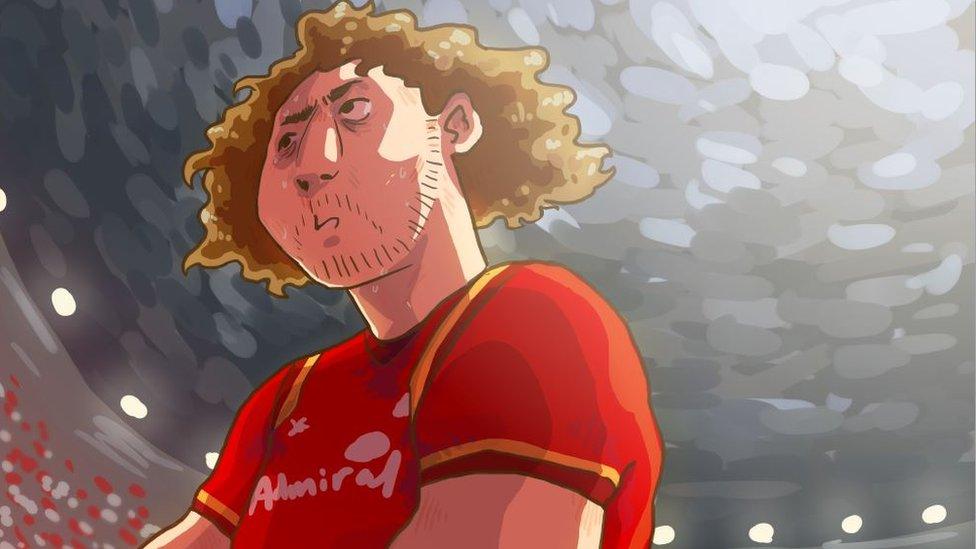
- Attribution
- Published29 October 2021

- Published28 October 2021
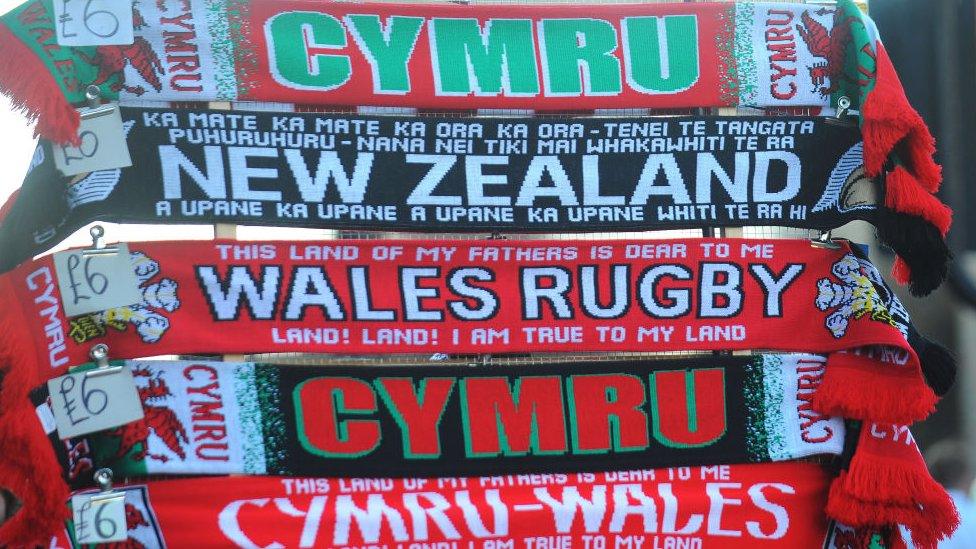
- Attribution
- Published24 October 2021
